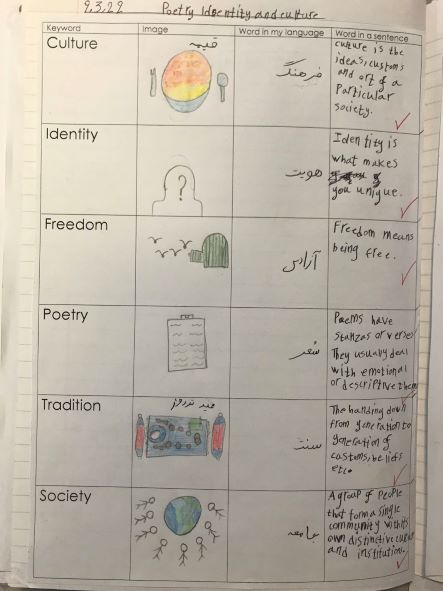Why work together with colleagues?
In a reception system for refugee or newly arrived pupils, the roles and responsibilities of the language teachers and the ordinary classroom must be thought through and negotiated (Miller, Mitchell & Brown, 2005 i; Goï, 2015i). The pedagogical organisation needs to be adapted. For example, teachers can adopt a spiral approach to checking learning achievements and filling in gaps in students’ knowledge; scaffolding (Gibbons, 2015)iand a support project can be defined on the basis of diagnostic assessments of competencies, in language(s) but also in school subjects (see for example this Prezi which lists assessment tools in the language of origin or non-verbal):
Individual assessment of the pupil
Mathematics assessment tools in the native language (CASNAV of Aix-Marseille, Lille and CANOPE) Assesses mathematic skills in the mother tongue “Là où sont nos paires” Available in 30 languages (CASNAV of Marseille) Available in 5 levels (for pupils aged 6 to 15) Words
Teachers can work with a lexique multilingue, simplify and explain instructions, organise oral and artistic expression workshops, propose graphical exercises, etc.

However, mainstream teachers are often not prepared to work with culturally and linguistically diverse students (Gándara, Maxwell-Jolly en Driscoll, 2005i; Premier en Miller, 2010i); and conversely, language teachers are not familiar with the subject and language of specialisation (known as mathematics or science literacy).
To overcome these difficulties, collaboration between teachers can be a good way to bring the professional skills and knowledge of the teaching team to students, especially in the mainstream classroom.
A ‘community of practice’
The notion of ‘community of practice’ (Kelikwele Bense, 2016)iis central to this type of approach. It is highly developed in North America where teachers are encouraged to collaborate and cooperate.
What is a community of practice?
For Bryk (2017)i, it is about breaking down the walls of solitary practice and creating safe spaces where teachers share and learn from each other. These are more or less formal spaces for teachers’ professional development, with the aim of improving students’ skills in the long term. Teachers share in order to better cope with the difficulties they encounter and build common knowledge.
In addition, working together can ease the daily workload.
Premier and Parr (2019)ihave shown their effectiveness in meeting the needs of refugee students; Creese (2010)i also finds a positive impact of teacher collaboration on students’ language learning. Bell & Baecher (2012)i explain that public schools in Minnesota have been recognised for improved outcomes for allophone students after implementing a collaborative model (Pardini, 2006); in US primary schools, a longitudinal study (York-Barr, Ghere & Sommerness, 2007)ialso shows significant effects of inter-teacher collaboration on allophone student achievement.
Hue Nguyen (2020) investigated interdisciplinary collaborative teaching practices (secondary EFL and science teachers) for refugee students in Australia: joint lesson planning, development of learning resources and co-teaching. The study shows that structured mediation spaces were more effective in meeting the needs of refugee students in mainstream classrooms. The language teacher was able to identify problematic language elements for students in the science class that needed to be explained and taught in a pre-teaching workshop; to develop resources to support students; and conversely, to help the science teacher adapt her teaching to the needs of her students (adapting materials and instructions with the help of the language teacher’s annotations). These collaborative practices had an effect on the learning of refugee students in the mainstream classroom.


